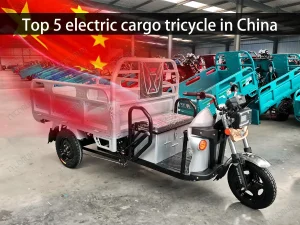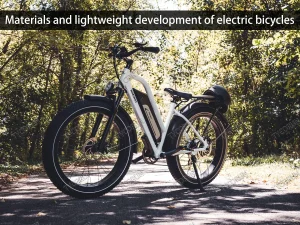Why home battery backup are growing in popularity and how to choose it

The traditional home battery backup system has been the use of generators. Generators are separate from the grid and are powered by fossil fuels. However, the topic of energy storage is getting more and more popular, and we have previously listed Top 10 Energy storage battery companies and home battery backup has been recently garnering attention since they offer the same advantage of continuous power supply and are more environmentally friendly, cleaner, and quieter than generators.
Home battery backup systems are connected to the grid when there is a power supply. They store electrical energy from the primary source and when there is an outage, they get disconnected from the grid and supply their previously stored power to the home.
In the rest of this article, I will discuss home battery backup systems in detail including how to choose a battery for your home, how to install it, how it gets charged, and the size of inverter you will need. I will also narrow down on the Tesla Powerwall and comprehensively explain it.
Choosing a battery for your home battery backup
The most common kinds of batteries for home backup are lead-acid and lithium-ion batteries.
Lithium-ion batteries are a very popular choice by customers when it comes to powering their homes since they are very compact and hence take little space and have a higher depth of discharge than most other batteries. The high depth of discharge means you can use the battery for a longer time before you are required to recharge it.
Lithium-ion batteries also have a large storage capacity and long lifespan.
Choosing a home battery backup can be confusing at first given the many existing types, parameters, and brands to choose from. Some factors to consider when choosing the battery for your home backup include:
●The depth of discharge of the lithium battery refers to the ratio of the discharged capacity of the lithium battery to the nominal capacity. When the ratio is smaller, it means that the discharge is shallower.
●Life cycle: The number of cycles refers to the number of rechargeable and dischargeable batteries. The higher the number of cycles, the longer the usable time.
●Specifications of the battery: The size of the battery depends on the power used by the household appliance. In the next part I will explain in detail how to choose the battery size.
●Warranty: Most battery manufacturing companies offer warranties with the purchase of their batteries. Longer warranties give you a sense of peace and security for a longer time.
The most popular home battery backups are lithium-ion batteries with a high rated capacity and a relatively greater depth of discharge than most other home batteries.
The popular Tesla Powerwall has a depth of discharge of 100% where you can drain the battery completely before recharging it. However, this is very damaging to the battery’s performance over time.
What size battery do i need to power my house
Factors that determine the size of battery that you need to power your house include the number of days or hours you would like to power the house using the battery and your average power usage for a normal day.
According to the Energy Information Administration, an average American home has a monthly power usage of 893 kWh which loosely translates to 30 kWh per day. I will also use an average of 3 days of power loss for this calculation since the home battery backup is only meant to supply power to the house when the primary source is unavailable.
Multiplying the average daily usage (30 kWh) by the number of days (3) gives a battery capacity of 90kWh to power an average American home for 3 days of a power outage. I recommend using your own value of average daily power usage and the number of days you would need the home battery backup. Now the most popular is the 51.2v 100ah powerwall battery, this video will give you a brief introduction.
How long do home battery backup last
Home battery backup last between one to two days. This depends on the household’s level of electric use.
Li-ion batteries are usually lighter compared to flooded cell batteries. In addition, their usage capacity is eighty to a hundred percent. Also, they have a higher recharge rate with a longer life cycle, which is over 4000 charge cycles.
The advantages of lithium iron phosphate batteries include a better discharge and charge efficiency, no need for maintenance, they are very safe and lightweight, and have a relatively long lifespan.
How long can a powerwall power a house
Home backup batteries are not meant to power the home for an extended amount of time. They are meant to power the home only when the primary power supply system (e.g., the grid or solar power) is unavailable. Therefore, they typically last for only a few hours or days.
The number of days that your home battery backup system lasts is largely dependent on the battery’s capacity and the amount of power it takes to run electrical systems in your home.
The Tesla Powerwall data specification includes a rating of 13.5kWh. The length of time that the Powerwall can power your house is significantly reliant on your power requirements. For instance, if you are powering a heater rated at 1000W, you will be able to run it for 13.5 hours.
An average American home uses approximately 30kWh daily. Therefore, the Tesla Powerwall can power an average home for approximately 10.8 hours before it needs to be recharged. The number of hours greatly increases if the household is only running essential appliances.
How is a home battery backup charged
The home battery backup is charged by your primary power supply source (the grid, solar, or wind). It is usually included in the house’s main circuit connection. You should connect the cable you received with your purchase to the battery’s input port on one end and to the inverter which is connected to the main power supply on the other end.
When there is power present, current can flow through circuit where the home battery backup is also connected, and it stores electrical energy. When there is power outage, the mains supply is disconnected and the battery acts as the power source for the home.
What size inverter do i need for my home
The inverter is an important component when it comes to connecting your home battery backup to your house’s main power supply and the size you should choose is heavily reliant on the total power consumption in your home. There are many inverters with a varying range of power ratings.
In general, however, experts recommend an inverter with any rating between 756 and 1000 Watts to run electrical systems in a home. If your power needs exceed the rating of the inverter, you can go for inverters with higher ratings.
How do you install home battery backup at home
The home battery backup can either be mounted on the wall or installed on the floor, depending on your preferences. However, it is generally recommended that the system is installed near the home’s main power supply because it makes it easier to integrate it to the house’s existing circuit.
You should seek help from a certified electrician and not attempt to install the battery yourself because this can cause you injuries and damage your electrical appliances.
An electrician will likely survey your house and tell you the most appropriate places you should place the system from which you can choose the area you prefer most. They are also highly likely to inform you of any existing local or national regulations for the installation of home battery backup systems, such as the obligation to include a safety enclosure.
The main components to consider when installing a home battery backup system include:
●The backup battery
●Main circuit panel
●Inverter
●Transfer switch
●Critical load panel (optional).
All these components will be connected to each other and to the house’s wiring. The process should always start with disconnecting the house’s power supply from the grid for safety purposes.
For example, this is the specific installation steps of Tycorun rack-mounted battery:

In this way, the home battery backup is integrated to the existing electrical circuit of the house such that connection to the mains can be cutoff when there is an outage, and the battery will continue supplying power.
Are home battery backups worth it
In conclusion, home battery backup systems are worth it especially if you live in an area where the grid power supply is often interrupted, or your primary sources of power are wind and solar energy. They can be of great help on those windless days.
They could still greatly benefit you if you live in an area that receives constant power supply because they can power your house during emergencies. Also, they are much more environmentally friendly, cleaner, and quieter than generators even though they offer the same advantage of continuous power supply. If you are interested in powerwall, this Top 10 powerwall manufacturers for home energy storage can be your reference.



























